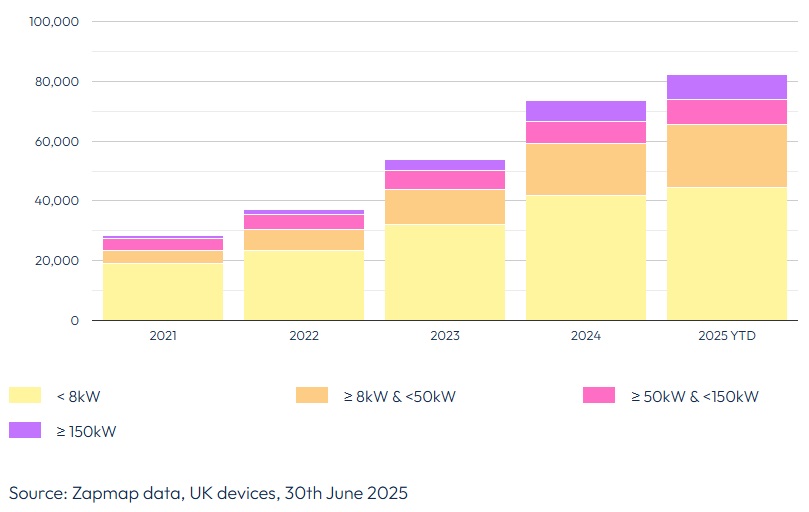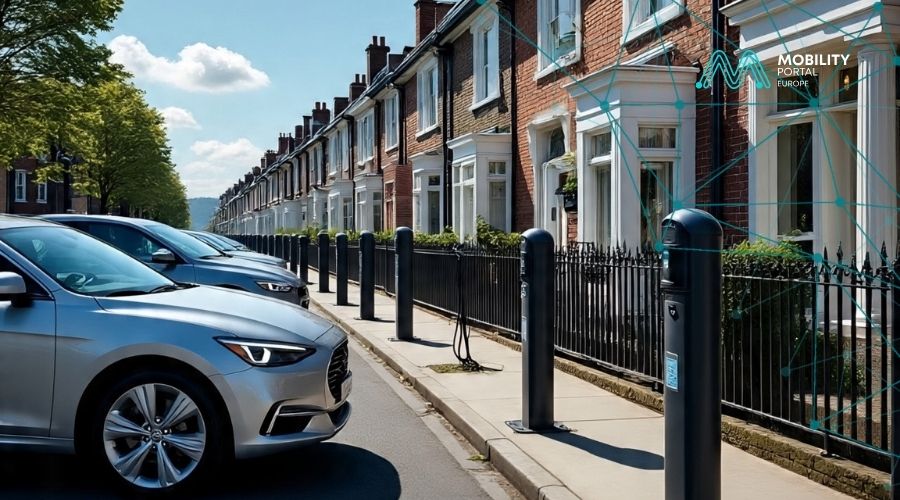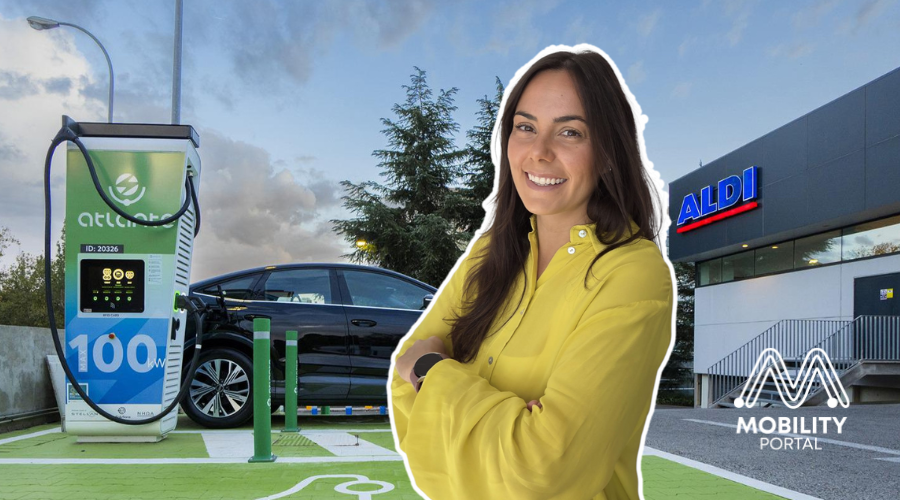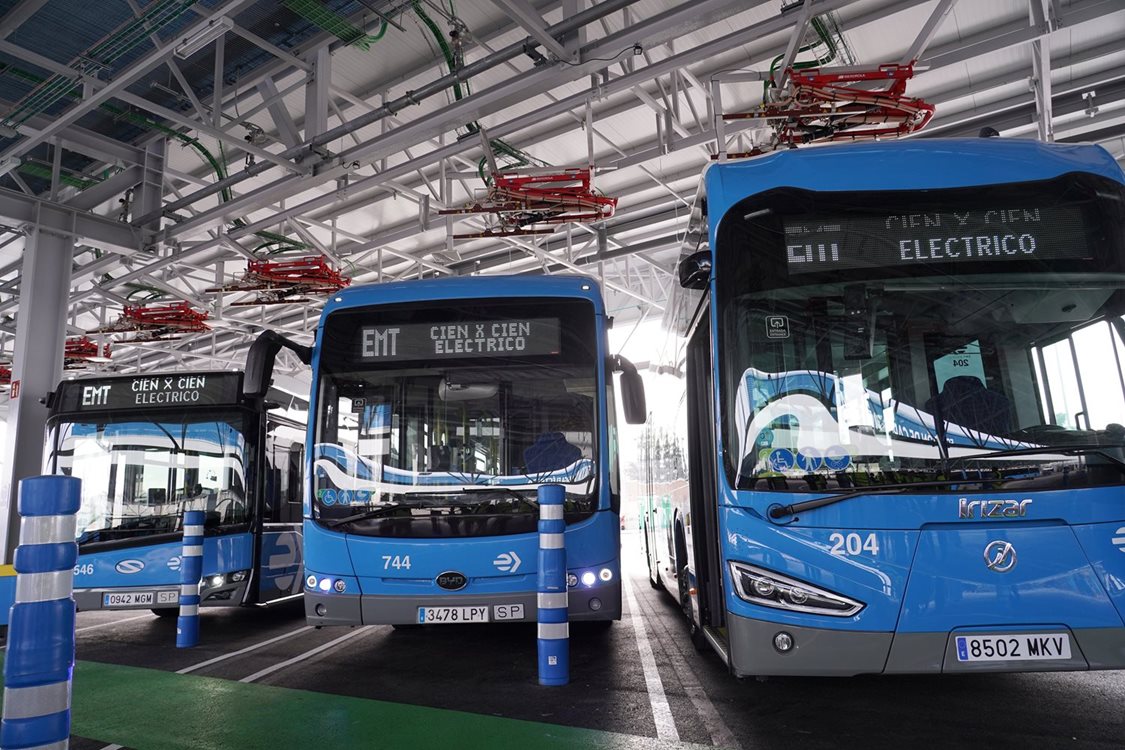As the electric vehicle (EV) infrastructure advances in the United Kingdom (UK), the debate over public charging prices is gaining prominence.
Industry representatives point out that, despite the growth in the number of charge points, economic barriers persist, particularly affecting those without access to private parking.
By the end of June 2025, the country had recorded 82,369 points across 40,479 locations. This figure reflects sustained growth in recent years: in December 2021, there were 28,460 public chargers; by 2023, the number had risen to 53,865; and by the end of 2024, it had surpassed 73,000. Between June 2024 and June 2025 alone, the network grew by 30%.

“The infrastructure has improved over the past 18 months, particularly with the addition of rapid devices at motorway service stations. It’s been a significant step forward in a short time,” highlights Dunstan Power, Director of ByteSnap Design and its EV charging division Versinetic, in conversation with Mobility Portal Europe.

However, Power notes that this development has not been equitable for all users.
People without access to parking not only miss out on the convenience of home charging, but are also forced to pay significantly higher costs for public charging.
According to FairCharge, drivers pay up to four times more in VAT for electricity used at public stations compared to those who charge at home.
“For those with private parking, the situation is favourable: there are multiple options and the equipment is affordable. No subsidy is needed to install it,” the executive points out.
“The real issue is for those who have to park on the street, as they are forced to pay high rates. It’s a gap that needs to be addressed,” he adds.
The tax disparity between domestic and on-street charging is one of the key concerns the sector is urging the UK Government to review.
Currently, electricity for domestic use is taxed at 5% VAT, whereas public charging can be subject to 20%.
“It’s not fair that those who rely on public charging end up paying significantly more than those who can charge at home,” the executive insists.
According to Dunstan Power, the solution lies not only in adjusting the tax burden but also in implementing inclusive access policies.
“We need to consider measures such as designating overnight public bays and supporting councils with installation costs,” he concludes.
How much would EV drivers save on public charging if VAT were equalised?
A Zapmap report highlights a key issue in the UK’s tax structure: VAT on domestic electricity is set at 5%, while public EV charging is not only more expensive by default but also taxed at a higher 20% rate—a disparity often referred to as the “pavement tax.”
All EV drivers pay VAT on the electricity they consume. However, in 2025, a typical user with a home charger is expected to pay 48 pounds in VAT, based on average mileage and vehicle efficiency.
In comparison, users without a residential charging option is projected to pay 194 pounds in VAT.
Drivers with access to private parking cover around 85% of their energy needs at home, relying on public infrastructure only occasionally.
Conversely, those without home access—except for a minority with workplace or shared community charging—must depend almost entirely on public infrastructure.
If VAT was equalised across domestic and public charging at 5%, a electric vehicle driver with Residential charging would save an average of 29 pounds per year, whilst a person who does not have a home charger would save an average of 145 pounds per year.
READ MORE
-
Atlante y su “modelo híbrido”: generación, almacenamiento y recarga ultrarrápida para un sistema más resiliente
Atlante acelera su despliegue en España y en diálogo con Mobility portal, Inés Mackey, Chief of Staff de Atlante Iberia define las prioridades de la empresa y su apuesta por la interoperabilidad de la mano de Charge League.
-
Spain Auto 2030: a point-by-point look at the plan set to redefine the eMobility landscape
Spain has entered a new phase in its industrial strategy for electric mobility. The Government has unveiled Spain Auto 2030, a roadmap designed to mobilise €30 billion over the next five years, reshaping the centre of gravity of the electric vehicle market through fresh incentives, a centralised management model, targeted investment in charging infrastructure and…
-
EMT Madrid licita 120 nuevos buses eléctricos: inversión de 79,35 millones y entregas entre 2026-2027
Con esta incorporación, Madrid refuerza su estrategia de descarbonización y consolida una de las flotas eléctricas urbanas más grandes de Europa.











